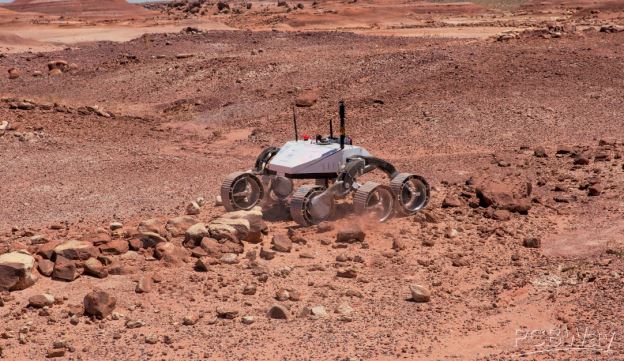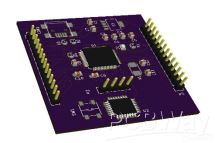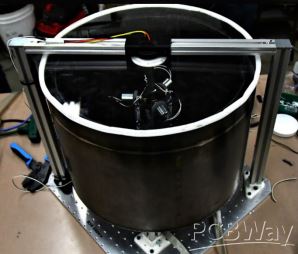USST Mars Rover Project

The 2015 Mars Rover - Saskatchebot - which won the European Rover Challenge in Poland
About the Team
The University of Saskatchewan Space Design Team (USST) is a Canadian student-run group that focuses on the design and construction of a multitude of space technology projects for international competitions. Our Mars Rover project is one of many current designs that has seen enormous sucess, placing 1st at the 2015 European Rover Challenge in Poland, and consistently a top finisher at the University Rover Challenge in the USA.
For 2017 we are hosting the first Canadian Rover Challenge and hope to bring more opportunities for students around the world to compete with robotic platforms to revolutionize planetary exploration with a competition uniquely focused on mineral prospecting.
The Rover
The 2017 Rover is a standalone platform, powered by a custom 26V LiFePO4 battery. The electrical control system consists of custom modules mostly making up brushless motor controllers and sensors built from ARM microcontrollers. At the center of it all is a Raspberry Pi Compute Module that controls each module and serves an interactive webpage where the user can view camera feeds, maps, path planning, sensor data, and control the rover with USB peripherals in realtime.
Another important part of our system is the use of stereoscopic and 360 video to immerse the operators in the rover's environment. Competition tasks have very tight deadlines, so being able to physically look over your shoulder is a huge advantage to working quickly and efficiently.
The rover has specialized wheels and suspension for climbing steep slopes of loose soil and rocks, a dexterous robotic arm and gripper for operating control panels and carrying tools, and camera gimbals with stabilization and leveling capabilities. Most components are made from carbon fiber and 3D printed plastics to keep the weight below 50kg in every configuration - in the terrain traversal outfitting the rover only weights 35kg!
USST wants to be a supporter of Open Source Hardware and Software and is beginning to organize and document its projects on GitHub at github.com/uofsspaceteam. Particularly, we wish to continue to develop and our python-based robotics software called Roveberrypy in order to make a useful platform to build any realtime system using Python 3.

The 2016-17 Mars Rover - Barnstormer – at testing in URC 2016. The final deployment will be at the Canadian Rover Challenge in July!
Our Circuit Boards
Many parts of the rover are made from custom electronics in order to keep the size and weight down as much as possible. We do prototyping with development boards and the electrical team designs the PCBs throughout the year using KiCad - paying close attention to the mass and volume budget inside our chassis. These electronics are all open-source on our GitHub.
VESC-R
A core part of the rover is brushless motor controllers. We have been working on completing a design forked from the VESC project that puts them in a PC-Card format for easy replacement and reconfiguration. Overall, there are 14 of these on the rover each attached to a backplane or module.

Power Distribution
As a battery powered-system, we need to carefully monitor our LiFe cells and keep track of how much power has been used. A central board takes care of regulation and distribution in order to increase efficiency and ease of assembly.

Compute Module Carrier
This is a work-in progress to adapt the new Pi Compute Module 3 (CM3) to our rover. The CM3 is a great piece of hardware because of the resources in the Pi community, the dual HD camera interfaces, and the flexibility of the SODIMM form factor. This is a complex design and is still in progress.

Module Boards
The rover's modules are dedicated ARM processors, usually based off of the Teensy 3.0 hardware to make transition from prototype to final design as easy as possible. Each board is just a little bit different depending on the functionality needed.



Support from PCBWay would be an enormous advantage to our team. We design many parts that never quite make it to the final product because of challenges of sourcing and manufacturing parts on time and on budget here in Saskatchewan, Canada. Having the ability to quiclky prototype boards means that more members of the team will get valuable design experience and feedback to continually expand their skills not just for the Rover project, but our others such as Project STARFOX for CAN-RGX and our High Altitude Balloon.


Project STARFOX Microgravity Mineral Filtering Device for CAN-RGX, and a beautiful view from our High Altitude Balloon!

For more information about USST, you can visit usst.ca or our social media @UofSSpaceTeam!
- Comments(0)
- Likes(2)


















